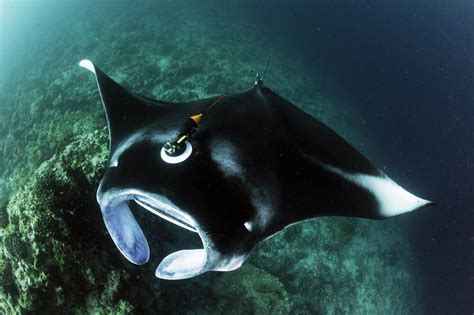A manta ray is a large, graceful marine animal with flattened bodies, triangular pectoral fins, and distinctive cephalic lobes. They are known for their impressive size, reaching up to 23 feet (7 meters) in wingspan. Manta rays are famous for their graceful swimming patterns and are often spotted near the water’s surface, making them a popular attraction for snorkelers and divers. They are filter feeders, primarily consuming plankton, and are considered gentle giants of the ocean.

Manta rays are unique in their ability to perform acrobatic flips and somersaults, a behavior believed to help remove parasites from their skin. Unlike many other rays, mantas are known for their curiosity and occasionally approach divers, creating memorable encounters for those lucky enough to observe them in their natural habitat.
Manta rays possess a remarkable potential for scientific study and biomimicry. Researchers are interested in understanding their efficient filter-feeding mechanisms to improve water filtration technologies. Additionally, studying the unique skin properties of mantas may inspire innovations in materials that resist fouling and biofouling. The exploration of manta ray abilities holds promise for advancements in various fields, from marine biology to engineering.
Manta rays have been known to humans for centuries, but their discovery and understanding in the ocean have evolved over time. Ancient seafarers and coastal communities encountered these creatures, often weaving folklore around them. However, systematic scientific study and documentation began in the 18th and 19th centuries.
The term "manta ray" is derived from the Spanish word "manta," meaning cloak or blanket, describing the appearance of their wide, wing-like fins. Early explorers and naturalists contributed to the understanding of these majestic creatures, and advancements in marine biology and technology further deepened our knowledge in the 20th century. Ongoing research continues to unveil the mysteries of manta rays and their crucial role in marine ecosystems.